 More than one communications pro has come to me with a clear, compelling and consistent question: “How do I move from being perceived as reactive to being viewed as proactive and strategic?”
More than one communications pro has come to me with a clear, compelling and consistent question: “How do I move from being perceived as reactive to being viewed as proactive and strategic?”
My two-part question back is this: “Well, are you a quarterback or a receiver, and are you sure it’s perception?” You don’t have to be an NFL junkie to understand the difference of being someone who calls the plays, reads the opposition and sees opportunities versus someone whose singular mission it is to catch the football. Don’t get me wrong; the world, and the game, needs both. But for those who wish to be viewed as captains of their own industries, the quarterback position is it.
For the communicator, being seen as strategic is a reflection of delivering ideas – and then results– that enhance or protect the image and reputation of a business and/or brand. It’s about looking in and around the business to identify what’s there, and what’s coming. For some, the behaviors that illustrate that kind of strategic sense come naturally; for others, it takes focused effort.
And while sometimes it’s about perception and how a communications leader visibly shows the ability to create and execute a great strategic offense, most often the it’s because he or she doesn’t consistently act in ways that say, “Listen to me; I’ve got a great idea.”
The migration from do-er to strategic thinker doesn’t happen overnight, and it doesn’t come from a list of to-dos. But I thought a short list of some of the more basic strategic behaviors for the communications quarterback-in-training might come in handy. Whether they apply personally or to team members and colleagues, they can serve as a foundation on which to build.
Get the right inputs: If you’re going to be strategic, you need to bring insights and ideas to the table, and that means you’ve got to have unique and timely inputs to stimulate your thinking.
If you’re not connected to the news of the world, you’re not getting the inputs to stimulate your thinking. It’s just that simple. Sure, you get your daily news clips or read the Wall Street Journal. But it pays to get new from a broader range of sources and across stakeholder groups if you’re going to have a full range of inputs upon which to act. Include mass media sources, but look for, and subscribe to news sources – big and small — that cover your competitors, NGOs, customers and other stakeholders. In fact, some of the best insights can come from bloggers and discussion groups. Are you wired in?
There are many news aggregators out there like Bottlenose, but they, too, need care and feeding to find what you’re looking for. And lest you think the only sources of news come from the Internet, I can’t underscore enough that sources of insight must include EXTERNAL connections to people and organizations you trust. The kiss of death for a strategic-wanna-be is being too insular, too internally focused.
Connect the dots: Ever received a news clip from someone with a cryptic “FYI” on it, and see no relevance to you or your world? As basic as it might seem to clearly articulate the relevance of a news clip, report or other input, surprisingly many don’t do it. Being seen as a strategic means sharing insights that are connected to the business, so do yourself a favor and type or speak the extra 3-4 sentences that clearly say what the connection is and – just as important – the compelling business risk or opportunity, then make sure you follow up to discuss it in detail.
What to DO? In addition to positioning news and other insights to a decision maker with a few introductory sentences, it’s really important to have some action steps behind it. We all get FYI stuff every day, and some of it might even be interesting, But if you’re going to be viewed as strategic, think through actionable steps that illustrate you’ve processed an insight more than a nanosecond. And if you’ve forgotten the first two items in the list above, now would be a good to time to re-read.
You’re in sales; don’t forget that. If you have the right inputs, have spent time thinking through them and have action steps in mind, you’re still only half way there. Learning to sell ideas is a key competency for the strategic communicator. That means you’ve got to identify the pain points of the executives/stake
holders you support and their business(es), articulate how your idea tackles the risk or opportunity, and convince your “customer” that you can do it efficiently as you deliver the results you promise. Being strategic isn’t just about having the idea. If you can’t, or don’t, act on it, you’ve found your place in the home for the terminally inert.
Eyes inside: Sometimes the best sources of insights for opportunities can come from inside your organization – and they need to be considered along with external sources. If you’re connected to the business – really connected – you’re seeing the business from all walks of life, from the point of view of all stakeholders. So look inside the business, too. You can see things that other executives – CEOs included – can’t or don’t see. If you apply the same kind of positioning and action to internal insights, you can further develop your reputation as a strategic thinker and proactive communications leader.
Following a short list of how-to’s doesn’t make anyone strategic. At best, these ideas serve as steps that can enable a transition of sorts. They support a simple concept and challenging development goal: being strategic is a reflection of how you gather unique insights, apply them to the business in innovative ways, and sell those ideas in timely, compelling ways. Whether you’ve got months to do it, or you’re under the two-minute warning, it’s always the role of the strategist – yes, the quarterback — to call the play.
Game on.


